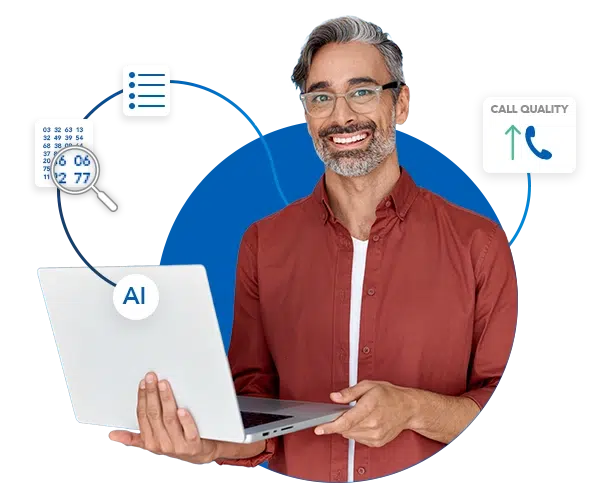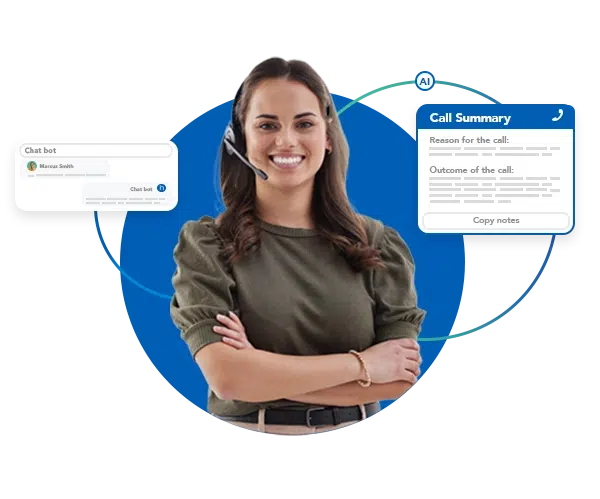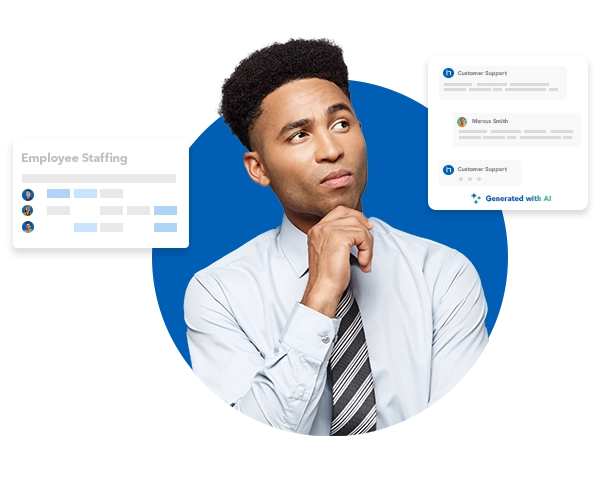We’re using World Senior Citizens’ Day to promote awareness about the challenges older adults face when seeking call center customer support and to encourage a more inclusive, accessible, and supportive customer experience for our seniors.
The Significance of World Senior Citizens’ Day
Established by Ronald Reagan on August 21st, 1988, World Senior Citizen’s Day, was created to honor our senior citizens for their lifetimes of achievement and all they continue to accomplish.
“We can best demonstrate our gratitude and esteem by making sure that our communities are good places in which to mature and grow older — places in which older people can participate to the fullest and can find the encouragement, acceptance, assistance, and services they need to continue to lead lives of independence and dignity.” – Ronald Regan
The Impact of 55+ Consumer Growth
The 2020 Census report showed that the U.S. population of individuals aged 65 and over will be approximately 78 million by 2035. This number is especially significant because it will surpass the under 18 population for the first time in U.S. history. While the older adult demographic that is contacting your call centers is already enormous, it’s only going to continue exploding in the years to come. This growth increases the urgency and importance of being able to provide exceptional service for differently abled consumers, so it’s more important than ever to begin prioritizing initiatives for contact center accessibility today.
What does it mean to create customer accessibility in call centers?
When we talk about customer accessibility, we often think about physical accommodations, like ramps and elevators. However, in the context of call centers, accessibility goes beyond just physical barriers. It means ensuring that your customer service team has the resources and training required to inclusively and effectively support individuals that need accommodations for challenges such as visual impairment, hearing loss, altered cognitive abilities, and language barriers.
Understanding Contact Center Accessibility Challenges for Senior Customers
In today’s fast-paced digital landscape, call centers play a pivotal role in connecting businesses with their senior customers. The 55+ adult demographic is significantly sized and often requires special attention from your customer service team. As people age, our sensory and cognitive abilities often change, leading to unique challenges for older adults when interacting with contact centers. Here are some common obstacles that elderly customers might be facing when it comes to contact center accessibility:
Hearing Impairment
Many senior adults experience varying degrees of hearing loss, making it difficult to comprehend conversations over the phone. Hearing aids are not always the solution, and when lip-reading for context is not an option, much can be lost in conversation.
Vision Challenges
Visual changes can range from difficulty reading small text to complete blindness, hindering elderly customers’ ability to navigate through digital pathways and menus and to read important information that supports their service need.
Cognitive Changes
As we age, many individuals experience cognitive changes, and while some are mildly affected, others may have significant difficulty with understanding and communicating their needs. They may experience speech difficulties or issues with memory, attention, and problem-solving abilities, which can result in confusion when navigating automated systems or understanding complex instructions.
Technological Barriers
While some senior adults will be perfectly comfortable with a wide range of the most modern tech tools, a large portion of the demographic has not learned how to use certain devices or technologies, making it challenging for them to interact through certain channels or platforms.
Language Barriers
Some elderly customers might not be fluent in the language used by the call center, which can further complicate communication.
7 Ways to Improve Contact Center Accessibility for Senior Customers
1. Comprehensive Contact Center Training
The foundation of successful accessibility in call centers lies in comprehensive training. Equip your staff with the knowledge and skills needed to interact respectfully and effectively with customers of all abilities. Most critical is that you provide call center empathy training. This training will educate your contact center customer service representatives to recognize and understand different accessibility needs, addressing customers’ needs with empathy and patience. Sensitization to this kind of human experience helps create a culture of inclusivity, ensuring that your call center team treats every customer with the respect they deserve.
2. Technology as an Enabler
While it’s true that technology can be both a boon and bane for your senior customers, by equipping your call center with tech that supports accessible communication from the agent’s side, you can drastically improve the customer experience. Here are a few ways to leverage technology for improved contact center accessibility:
Text-to-Speech and Speech-to-Text
Incorporate text-to-speech and speech-to-text technologies to assist customers with hearing impairments or speech difficulties. This technology facilitates accessible communication and limits misunderstandings for all parties.
Screen Reader Compatibility
Ensure that your call center’s online platforms and information are compatible with screen readers. This allows visually impaired customers to access your services independently. If you have online platforms or interact with customers via digital communications, ensure that the text is large and easy to read.
Intuitive UX
Design user-friendly online platforms with intuitive navigation systems with easily accessible support resources. Use clear type fonts and appropriate color contrasts to enhance visibility. Before choosing your technology vendor, be sure to do your research and ensure partnership with an organization whose products meet all of your contact center accessibility requirements.
3. Streamlined Interactive Voice Response (IVR) Systems
By optimizing IVR systems, you can enhance accessibility. Keep the menus concise and clear, allowing customers to easily navigate to the desired options and include the option to reach a live human agent is available every step of the way. Find an efficient IVR system that incorporates voice recognition technology that understands various accents and pronunciations and can understand different speeds of speech to foster smoother interactions.
4. Personalized Assistance
Recognize that each customer is unique, and their accessibility needs may vary. Offer options for customers to request personalized assistance, whether through a dedicated accessibility hotline or an online chat service. This way, customers can communicate their specific requirements, enabling your team to provide tailored assistance and a memorable customer experience.
5. Feedback and Continuous Improvement
Engage with your 55+ customers to gather feedback on the accessibility of your call center services. Create various channels for customers to voice opinions about their experiences. This feedback loop can provide invaluable insights into areas that require improvement and highlight the aspects that are working well.
6. Multilingual Support
Offer multilingual support and translation services to cater to customers who may not be proficient in your contact center’s primary language.
7. Collaboration with Accessibility Experts
Consider partnering with accessibility experts or consultants who can assess your call center’s practices and provide recommendations for improvement. These professionals can offer insights into the latest accessibility standards and best practices, helping you stay ahead of the curve. Contacting your local Area Agency on Aging is a great place to start.
The Path Forward for Senior Citizen Contact Center Support
Accessibility means equal access. An accessible contact center is a testament to a company’s commitment to contact center customer satisfaction (CSAT) and inclusivity. By acknowledging and addressing the unique needs of elderly customers, call centers can create an environment of inclusivity and empathy. Through efforts such as contact center training, intuitive and streamlined technologies, and a focus on inclusive customer experiences, you can create an environment where all customers feel valued and empowered.
Contact Center Accessibility is Ongoing
Remember that contact center accessibility is not a one-time effort; it’s an ongoing journey of improvement. As you continue to enhance the accessibility of your call center, you’ll foster stronger customer relationships and positively impact the lives of those who interact with your business. Ultimately, a commitment to accessibility enhances customer satisfaction and loyalty, contributing to a more connected and compassionate business-customer relationship.
Ready to start designing and executing your contact center accessibility plan?
Work with Insite and begin creating a contact center operation that supports your senior customer demographic. Become the benchmark for innovative accessibility, outstanding customer experience, and brand loyalty. Connect with an industry expert today.
Learn more about elder accessibility and why it matters. Learn more about customer accessibility as a whole.








